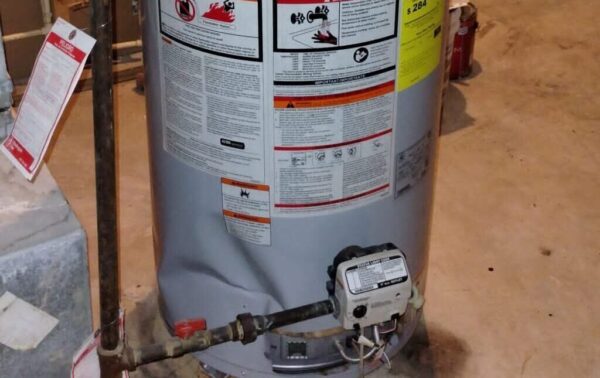|
Your water heater is crafted to consistently heat water to a uniform temperature, eliminating the need for frequent adjustments. Nevertheless, there may be instances where you notice your water is either not sufficiently warm or excessively hot. Should this occur, here's a comprehensive guide on adjusting the temperature for various water heater models, along with recommendations on the ideal hot water temperature. What Temperature Should a Water Heater Be Set At?Most water heaters are engineered to function safely within the temperature range of 120 to 160 degrees Fahrenheit. Many tank-style units offer a low-temperature option, heating water to approximately 90 to 100 degrees Fahrenheit, which aids in energy conservation. However, it's imperative not to leave the unit at this setting when hot water is in use. Maintaining a minimum temperature of 120 degrees Fahrenheit within the tank is crucial to prevent the rapid growth of harmful bacteria, notably Legionella, responsible for Legionnaire’s disease, which thrives in warm water. Setting the water heater to at least 120 degrees ensures the water is sufficiently hot to eliminate bacteria. Although most units can be set as high as 160 degrees Fahrenheit, it's advisable not to exceed 140 degrees Fahrenheit to mitigate the risk of scalding. The EPA recommends a default setting of 120 degrees Fahrenheit to conserve energy and prevent scalding. Conversely, OSHA suggests setting the water heater to 140 degrees Fahrenheit for enhanced cleaning and sanitation purposes. Temperature settings between 120 and 140 degrees Fahrenheit are considered safe, allowing for personal preference. If there are young children in the household, setting the water heater to 120 degrees Fahrenheit is prudent to prevent scalding accidents. For households without young children or with older children, adjusting the temperature to 130 or 140 degrees Fahrenheit is typically recommended. Additionally, increasing the water heater temperature during winter months is advisable as colder water lines can cause a significant drop in hot water temperature during transit. Failing to adjust the water heater for winter conditions may result in insufficiently warm water at faucets and showers. How to Adjust the Temperature on a Gas Water HeaterIf you own a tank-style gas water heater, you'll find the temperature control knob positioned near the base of the unit. Adjusting the temperature on such a unit is a quick task, simply requiring you to turn the knob to increase or decrease the setting. However, the challenge lies in the fact that these units typically use numbers and symbols instead of indicating actual temperatures. Therefore, understanding the temperature corresponding to each setting is essential to avoid inadvertently setting the temperature too high or too low. Fortunately, these symbols are generally standardized across most units. The first setting beyond "Off" is typically labeled as "Low" or indicated by a solid circle, representing a temperature range between 90 and 100 degrees Fahrenheit. The subsequent setting, usually labeled as "Hot" or marked with a triangle, should correspond to 120 degrees Fahrenheit. Following that, you'll usually encounter three higher settings, denoted as 1, 2, and 3, or A, B, and C, corresponding to temperatures of 130, 140, and 150 degrees Fahrenheit, respectively. The highest setting, labeled as "Very Hot," corresponds to 160 degrees Fahrenheit. For older water heaters, there may also be a "Pilot" setting used for relighting the pilot light, although newer units typically utilize electronic igniters instead. Additionally, some units may feature a "Vacation" setting, which prevents energy wastage by keeping the unit off while you're away, although gas flow to the pilot light may still be maintained to keep it lit. How to Adjust the Temperature on an Electric Water HeaterModifying the temperature on a tank-style electric water heater follows a similar process to that of gas units. However, electric models typically conceal the temperature control behind an access panel situated near the unit's bottom. To access the control, you'll usually have to unscrew the panel cover and remove any insulation in the way. Subsequently, simply adjust the control knob to the desired temperature or corresponding symbol. After adjustment, remember to reinstall the insulation to prevent heat loss and energy inefficiency. How to Adjust the Temperature on a Tankless Water HeaterAdjusting the temperature on a tankless water heater is simpler compared to other types of units. This is facilitated by the presence of a digital display on most tankless models, indicating the current temperature setting. To raise or lower the water temperature, simply use the up or down arrows on the display until your desired temperature is shown. How to Measure Your Water TemperatureAll water heaters may encounter occasional issues leading to fluctuations in temperature, either higher or lower than normal. If you notice sudden changes in the temperature of your water, we advise measuring it to assess the heater's functionality.
To measure your hot water temperature accurately, begin by turning on the hot water faucet at a sink to its maximum setting. Allow the water to run for at least 30 seconds to ensure it reaches its peak temperature. Then, utilize a kitchen thermometer to gauge the temperature. If it differs from the set temperature on your water heater, it's prudent to have the unit inspected to identify the underlying cause of overheating or insufficient heating. At Meade’s Heating and Air, we offer comprehensive assistance for any water heater issues you encounter. Our services encompass repair and maintenance for all water heater models, including installation of both tankless and conventional units. Additionally, our team of certified technicians specializes in ductwork, indoor air quality services, and various heating and cooling solutions. If you require water heater or HVAC services in the Sterling area, don't hesitate to contact us today.
0 Comments
|
AuthorWrite something about yourself. No need to be fancy, just an overview. Archives
June 2024
Categories
All
|
Local Service AreasAnnandale, VA
Fairfax, VA North Springfield, VA West Falls Church, VA Burke, VA Falls Church, VA Hours of Operation Monday - 9:00 AM - 6:00 PM Tuesday - 9:00 AM - 6:00 PM Wednesday - 9:00 AM - 6:00 PM Thursday - 9:00 AM - 6:00 PM Friday - 9:00 AM - 6:00 PM Saturday - 9:00 AM - 6:00 PM Sunday - Close |
Navigation |
ServicesAC Unit Replacement
AC Unit Repair Furnace Repair AC Maintenance Emergency AC Service Commercial Rooftop Unit Commercial AC Maintenance Apartment AC Repair Commercial HVAC Installation Water Heater Repair Air Quality Service Air Conditioning Repair Air Conditioning Maintenance Air Conditioning Installation Air Conditioning Replacement Air Conditioning Components Heating System Repair Heating Installation Heating System Maintenance Boiler Services Furnace Repair Heat Pump Repair |
Contact usAC Repair Annandale
3906 Millcreek Dr. Annandale, VA 22003 (571) 999-7227 |


 RSS Feed
RSS Feed
